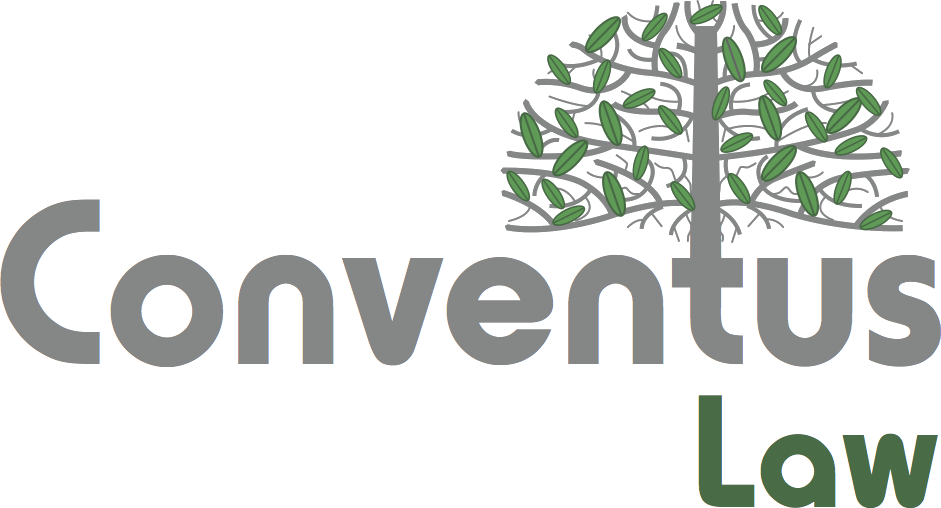Litigation Management Software: How To Build A Winning Tech Stack.
As legal teams manage growing data volumes, navigate complex cases, and adapt to meet changing client needs, having the right technology becomes increasingly important. Selecting, implementing, and maintaining a litigation management software stack that delivers long-term value requires a strategic approach.
A recent ACEDS webinar with Stephen Dooley, Director of eDiscovery & Litigation Support at Sullivan & Cromwell, and Shannon Bales, Senior Manager of Litigation Support at Munger, Tolles & Olson explored this topic.
Watch the on-demand webinar now.
In this blog, we’ll share the key takeaways from the discussion, including how to align technology with firm strategy, maximize the value of existing tools, and identify opportunities for innovation. We’ll also offer tips for selecting new litigation management software, navigating procurement, and ensuring successful adoption. Whether your firm is evaluating its current tech stack or preparing for a new investment, this guide will help you make strategic decisions that drive long-term success.
Aligning technology with firm’s strategy
Aligning your technology investments to the law firm’s big-picture goals helps ensure long-term value. Whether your firm is focused on building stronger client relationships, optimizing operational efficiency, winning new business, or increasing profitability, the right technology can support and enable your team to meet these goals. When evaluating your existing tech stack and new solutions, consider how they support the firm’s strategy.
Maximizing the value of your litigation management solutions
Technology use within a law firm is a constant evolution. Litigation teams must continuously assess whether their current technology stack is meeting their needs. Maintaining a strong litigation management software tech stack requires legal technologists to find a balance between listening and leading. This combination of reactive and proactive technology approaches ensures that the firm maximizes the value of existing solutions while staying ahead of the competition.
Meeting needs with existing technology
Before investing in new technology to address a challenge, firms should evaluate the tools they already have. You may find that underutilized or adaptable features within an existing litigation management solution can address key challenges. By leveraging current resources effectively, firms can optimize costs, streamline workflows, and drive innovation without unnecessary disruptions.
Tips for maximizing the value of your tech stack
- Conduct regular training sessions to keep staff informed of software capabilities
- Monitor adoption and set clear usage benchmarks
- Explore integrations with other tools to enhance functionality
- Encourage feedback from users to identify unused or overlooked features
- Work with vendors to optimize configurations based on firm-specific needs
Finding new opportunities to drive innovation
Engaging with industry peers, legal technology organizations, and internal stakeholders can help firms stay up to date on legal tech trends. This approach ensures that firms are not just reacting to problems but anticipating and addressing them before they become obstacles. “We are trying to be out there proactive, seeing where the trends are, finding out what our peers are doing is very, very important to us,” said Shannon Bales.
Artificial intelligence (AI) is one of the biggest disruptors in legal technology today. Stephen Dooley offered this advice for firms evaluating AI solutions, “Educate yourself. AI is evolving quickly, and what you learn today may change tomorrow. The key is understanding how it fits into your workflow and whether it genuinely provides value.”
Staying aligned with industry peers and leading firms is essential, not just for staying competitive but also for ensuring compatibility. As Shannon put it, “We don’t want to be too far afield of what everyone else is using because when it comes time to do an exchange or need to talk the same language or team up with another law firm, we don’t want to have [a tech stack] that is, for lack of a better term, ‘Weird Barbie’.” Using similar or complementary tools can facilitate smoother interactions between firms working together on cases, allowing for seamless document sharing, communication, and workflow integration.
Knowing when it’s time to make a change
Moving on from a litigation management software provider is a difficult decision—no firm wants a technology investment to fail. If a software provider has historically been responsive and engaged but is no longer meeting your firm’s needs, schedule a conversation. Openly communicate your needs with the provider, giving them the chance to resolve concerns.
Discuss any usability issues, adoption hurdles, or missing functionality and ask if the provider’s product roadmap will address these challenges in the near future. A vendor that listens, engages, and actively works to improve the experience may still be a valuable partner. However, if repeated attempts to resolve concerns yield no progress, it may be time to consider alternatives.
Some indicators it’s time to explore new solutions include
- Persistent workflow frustrations or bottlenecks
- Security or compliance concerns with outdated systems
- Client requests for features that current tools do not support
- Rising costs of maintaining legacy software
- Increased competition leveraging more advanced technology
Regularly reviewing software performance and soliciting feedback from attorneys, litigation support teams, and clients can help firms identify gaps and make informed decisions about when to upgrade or replace tools.
Navigating the procurement process
Once your team decides to invest in new litigation management software, the next step is the procurement process. This involves evaluating solutions and selecting a vendor, contract negotiations, and security reviews. While legal tech procurement can be time consuming, planning ahead can help accelerate the process.
Evaluating and selecting solutions
Selecting the right litigation management solution requires a thoughtful evaluation of how the technology will support both internal teams and clients.
A strong solution should not only streamline workflows and improve productivity but also deliver clear value to clients. Begin by defining your needs and goals
- What are the litigation team’s biggest challenges?
- How do case teams currently collaborate, and where are inefficiencies?
- What do clients expect in terms of technology and security?
- How are competitors using tools, and how does your firm compare?
Beyond functionality, the ease of working with a vendor is a critical consideration. A technology provider’s role does not end at the point of purchase; rather, they should serve as a long-term partner, offering robust support, training, and ongoing product enhancements. A vendor committed to continuous improvement and collaboration can make a significant difference in the success of a technology investment.
Finally, as mentioned above, be sure to assess the broader market landscape. What tools are peers and competitors using? How does their chosen solution compare in terms of industry adoption and scalability? A well-established platform with a strong user base and financial backing is more likely to offer long-term stability and innovation.
Budgeting for legal technology
Budgeting is often a complex process. In fact, recent research from Ari Kaplan Advisors confirms that lack of budget is one of the top barriers to innovation. In many cases, firms must plan technology investments months, and sometimes years, in advance. While unexpected purchases can be made, they are significantly more challenging to justify. Gathering ongoing feedback from users and staying up to date with technology trends can help your team act more quickly when the time is right.
Security considerations
Ensuring legal tech security is critical as firms must confirm that new technology meets strict data privacy, security, and compliance standards. This has become even more critical as litigation management solutions begin to incorporate AI-assistance. You can get a head start on this part of the procurement process by asking your selected vendor to provide their certifications and answers to common security questions.
Quick tips for navigating procurement
- Engage all key stakeholders early, including IT, security, procurement, and end users
- Aim to complete the evaluation process before budget season
- Establish clear metrics for success and implementation timelines
- Ask vendors to proactively provide security, data protection, and compliance information
Managing change and driving adoption
Once you’ve moved past the procurement process, the next step is to get things started off on the right foot. Implementing a new litigation management software solution is not just about purchasing the right tool—it’s about ensuring teams use it effectively. Resistance to change is common, but a well-planned rollout can encourage adoption and minimize disruption.
Strategies for successful implementation
Successful training, implementation, and adoption of litigation management software require a strategic approach that prioritizes gradual rollout, user engagement, and continuous support.
Start small with tech-savvy advocates
One of the most effective methods is to start small, allocating licenses selectively to engaged users who are most likely to provide valuable feedback and advocate for broader adoption. “Starting small and growing is something that has been a very successful approach for us. But you have to be ready to ready to grow if needed,” said Shannon. Once a small group of engaged users have proven the software, you can develop additional use cases to drive broader adoption.
Foster creativity among champions
Another critical component of successful adoption is fostering enthusiasm and creativity around the new tool. Once early adopters have a foundational grasp of the technology, encourage them to experiment and identify innovative use cases.
When paralegals and attorneys see firsthand how a tool improves their workflow, they become vocal advocates, helping to drive engagement. “Their success is our success,” says Shannon, “If I can get a paralegal or an attorney to turn around and say, ‘Wow, this thing is great. You’ve got to use it.’ … If they’re out there bragging about the product, I’ve won,” Peer recommendations often carry more weight than IT or management directives, making internal champions a key part of a successful rollout.
Offer ongoing training and support
Training and ongoing support also play a vital role in adoption. Structured onboarding processes that include hands-on training, accessible user guides, and continuous opportunities for skill-building help build user adoption and confidence. Offering a variety of resources lets lawyers and litigation support teams select the learning style that best suits their needs.
In addition, regular follow-ups and open communication with the vendor can help address any roadblocks and fine-tune the implementation process. Celebrate and shares user successes to help reinforce the value of the tool and keep it top of mind.
Future-proofing your litigation tech stack
The legal technology landscape is constantly evolving. Firms must balance innovation with stability, ensuring they adopt litigation management solutions that are both cutting-edge and reliable. Staying engaged with industry trends, maintaining strong vendor relationships, and continuously assessing technology performance will help firms remain competitive.
By taking a strategic approach to selecting, implementing, and managing litigation management software, law firms can build a tech stack that not only meets today’s needs but also positions them for long-term success.






